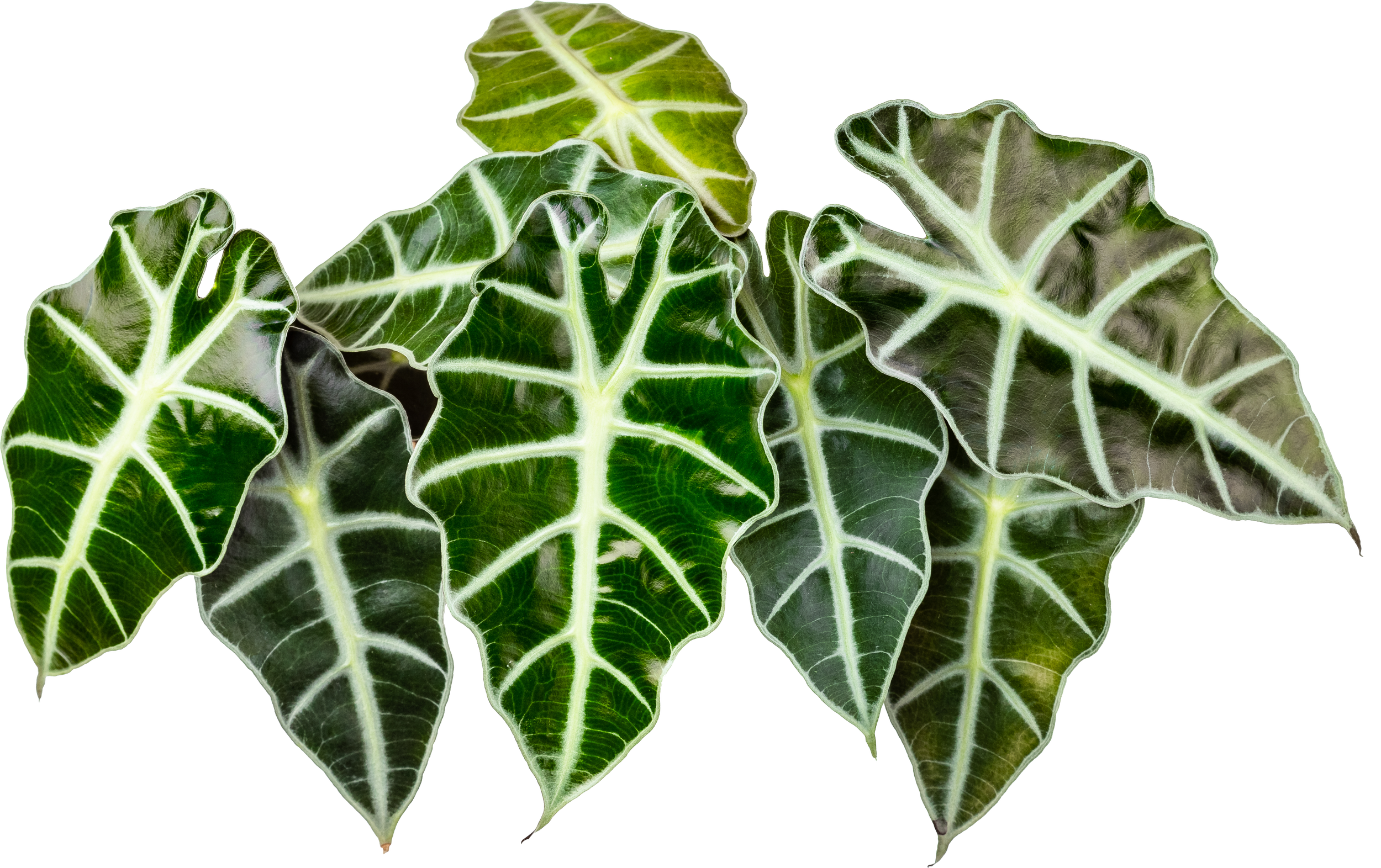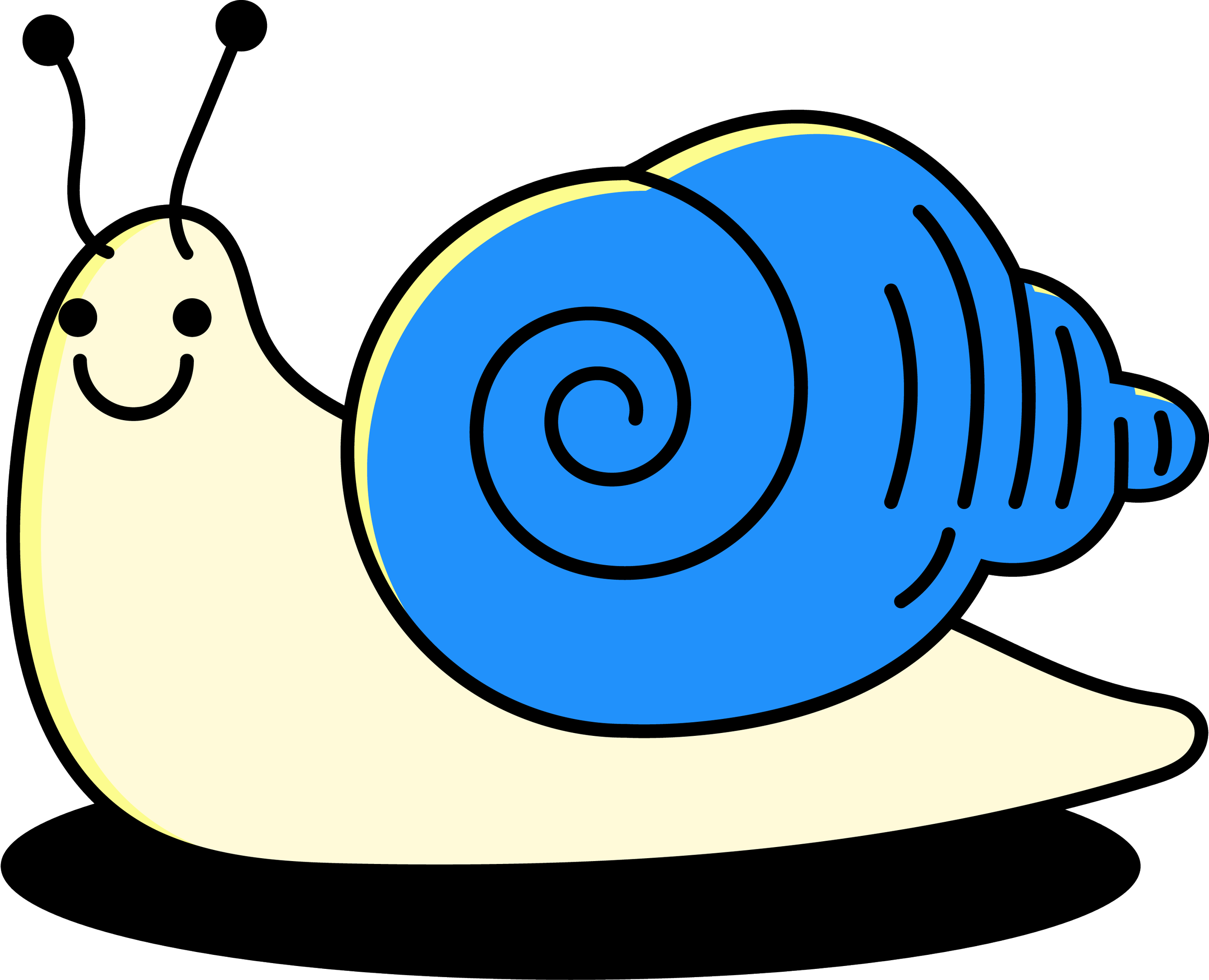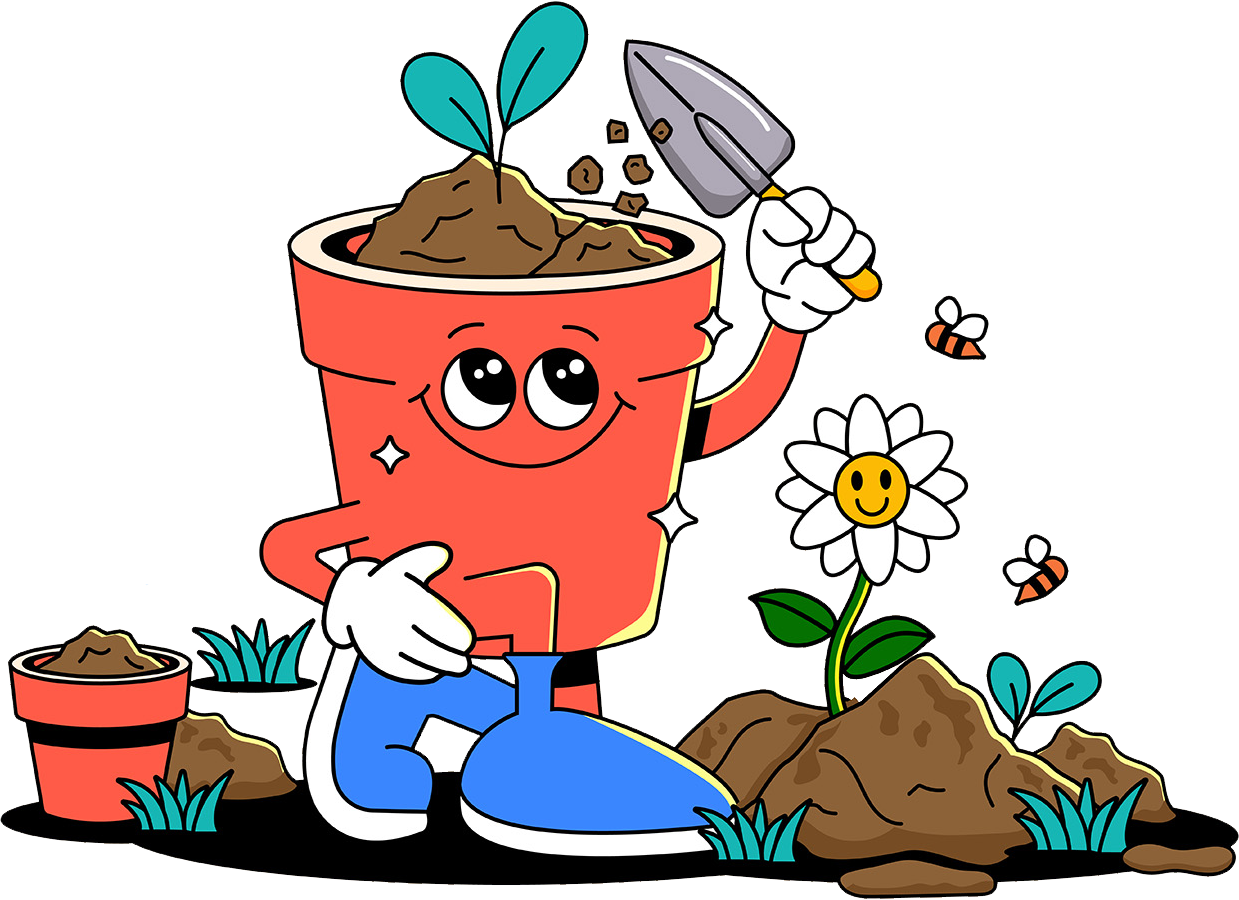INDIRECT SUN
Keep in bright, indirect light
☀︎ Avoid harsh sun ☀︎
Alocasia can survive in low light, but it won’t be happy about it. If you notice slow growth and leaf drop, try moving it to a brighter spot!
WATER WHEN DRY
Water when top inches of soil are dry
But make sure it doesn’t get soggy! Overwatering can lead to root rot. Make sure its pot has good drainage.
Alocasia thrives in high humidity.
Consider using a humidifier to boost humidity levels around your alocasia. A pebble tray can also help, but may not have the best results.
To mist or not to mist? Before you reach for the spray bottle, read The Misting Myth.
soil needs
Alocasia digs a light and airy mix that allows its roots to breathe.
When choosing a potting mix for alocasia, look for mixes that include:
ᯓ Perlite ᯓ
Improves drainage and prevents waterlogging.
ᯓ Orchid Bark ᯓ
Adds airflow and helps keep soil from getting too dense.
ᯓ Coco Coir ᯓ
Helps hold moisture without making the soil too wet.
Common Issues
-
A possible sign of overwatering. Soil that has been overwatered can lead to root rot.
Remove affected leaves.
If you suspect root rot: dry out the soil for a day, remove from pot, trim away dead, mushy roots, and repot in fresh soil.
-
Commonly due to soil kept too dry.
Regularly check the soil moisture and water when the top few inches feels dry. If the soil feels wet, drooping could also be a result of overwatering!
-
Often due to low humidity or soil kept too dry.
Make sure to keep up with those humidity levels by using a humidifier, or a pebble tray.
-
A sign of a fungal problem.
Remove the affected leaves. Prevent this by cutting back on humidity or provide better air circulation.
Not Pet Safe
Alocasias can be toxic to pets if ingested. If you have pets, keep alocasia plants out of their reach.









